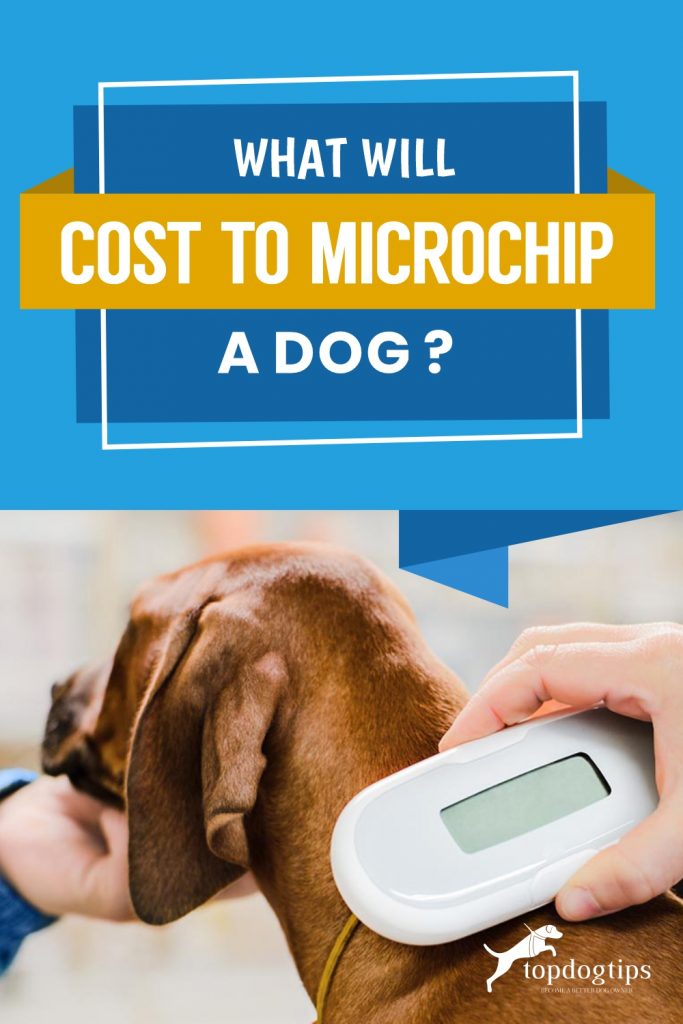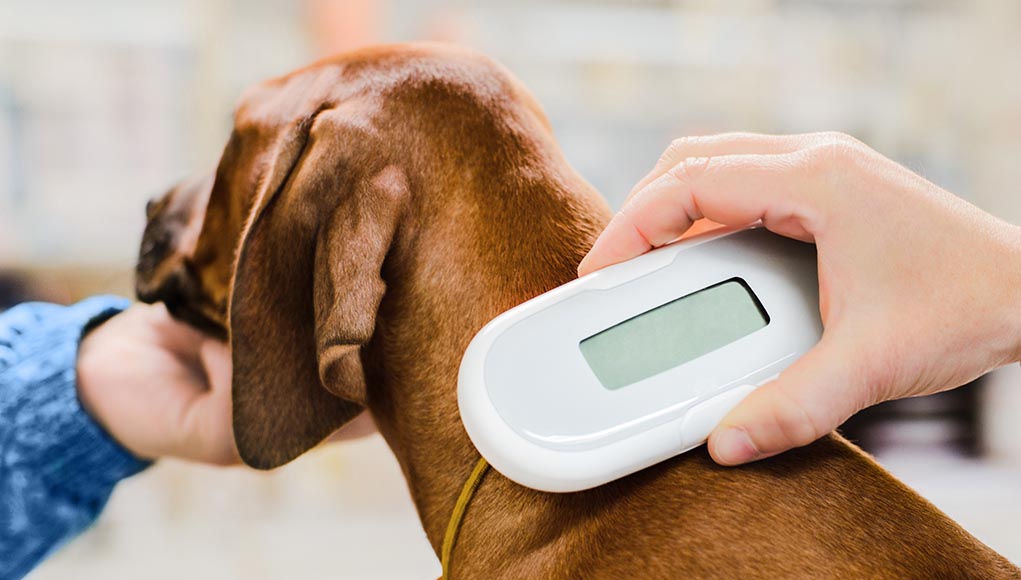It may sound like something from a sci-fi movie, but microchipping has been around for almost a quarter of a century. Since 1996, microchips have not only helped locate lost pets, but have also helped saved their lives. Read on for an overview of microchipping, why it is so important and how much it will cost to microchip your dog.
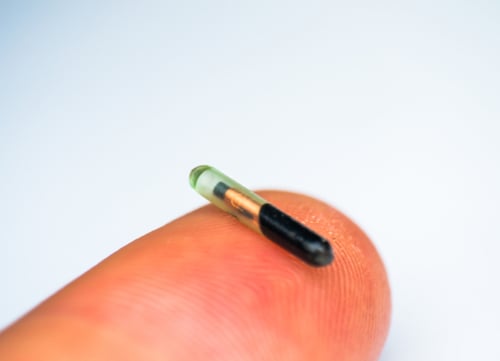
What Is a Microchip?
Contrary to popular belief, microchips aren’t GPS devices used to locate pets in real time. Instead, they are used when pets are found as a way to contact their owner. Basically, a microchip is sort of like a micro SD card, but a really small one — about the size of a piece of rice. On that microchip is data about the dog and the dog’s owner, including their name and contact information. That tiny microchip is inserted just under the dog’s skin between their shoulder blades where it can be scanned by veterinarians and humane welfare organizations should your dog ever be in a situation that warrants their care.
Why Microchip a Dog?
There are various misconceptions about microchipping — misconceptions that will do your dog more harm than good. For example, many pet owners assume the process is painful or scary for a dog. Or they assume that if their dog wears a collar, there’s no reason for a microchip. Additionally, they may think, “I have a little lap dog who never goes anywhere. She doesn’t need a microchip.” Those assumptions are all wrong, for several reasons.
While it is a good idea to have your dog wear a collar with an ID tag, it isn’t always helpful. If your dog escapes or runs away, the tag is helpful if a person finds the dog with the collar intact. But what if the dog escapes from a loose collar? What if the tag gets worn and becomes illegible? What if someone steals your dog and tries to sell it to someone else? It does actually happen. As you can see, a collar and ID tag is not a permanent solution to finding a lost dog.
As for the excuse that your dog never goes anywhere, what about the vet or groomer. What if your dog gets spooked while there and runs off trying to find you? Worst yet, what if something happens to you and you’re in need of someone to take care of your dog outside of your home? Don’t ever assume that your dog will always be safely confined to your home and yard.
On to the fear that microchipping will hurt your dog: Rest assured that it’s no more painful than a typical vaccine. It doesn’t even require surgery or anesthesia. The process only takes seconds and simply involves the insertion of a needle to ensure the chip is safely secured under your dog’s skin.
The No. 1 reason for microchipping dogs is the fact that dogs with microchips are more than twice as likely to be reunited with their owners than dogs without microchips.
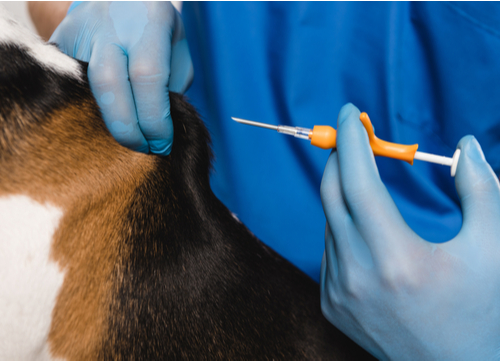
How Do Microchips Work?
You already know how microchips are implanted, but what about the nitty-gritty as to how they actually work? Basically, microchips operate by using radio-frequency technology. There’s a microscopic radio receiver inside the microchip as well as a transponder. The receiver is assigned a chip number that matches a number assigned to the owner when the dog receives the microchip.
After the dog is microchipped, it simply goes about its life as normal. No information is transmitted or received during that time. That is unless the dog is lost and found by a shelter or veterinarian with a microchip reader. This microchip reader is a handheld device that is able to scan the microchip and access its chip number. After acquiring the chip number, they are able to search any one of several online databases for the dog’s owner and a way to contact them.
It is important to understand that there are two steps to microchipping a dog. The first is to actually have it microchipped. The second is to register your dog and microchip on an online database. It is important for dog owners to remember which database they’re on so they know which website to visit to keep their contact information current. After all, if you change your phone number or email address without updating the database, nobody will be able to contact you. They will, however, be able to contact the clinic that conducted the microchipping. But without taking the second step, they won’t be able to contact you personally.
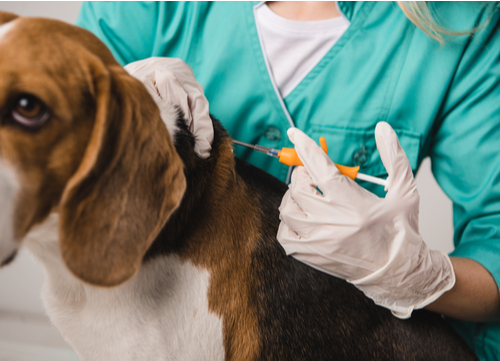
Where Can I Take My Dog to be Microchipped?
Most veterinarians and animal shelters offer microchipping, although some may have different age requirements. Most places will microchip a dog as young as 6 weeks old, providing they weigh at least 2 lbs.
You don’t even have to go to a traditional veterinarian to have your dog microchipped. Some popular pet stores may even offer occasional clinics during which a vet comes to the store to offer microchipping services and routine vaccinations. These services are often less expensive than they would be at a traditional veterinarian. However, these places don’t take the place of a traditional veterinary clinic. You still need to take your dog to a vet for their annual check-up and if they ever get sick.

Microchip Databases
Where your dog’s information is stored will depend on the microchip company and the database it uses. Wherever you end up going to have your dog microchipped, they will provide you with the name of the database and paperwork detailing what you need to do in order to register your dog and keep your contact information up to date.
In order to help organizations and veterinarians figure out which database to check for a found pet’s microchip, they will likely check a universal database offered by the American Animal Hospital Association (AAHA). Some popular microchip companies include:
- 24PetWatch Pet Protection Services
- AKC Reunite
- BuddyID
- Furreka
- HomeAgain
- Homeward Bound Pet
- Identrac Inc.
- InfoPET
- International Pet Registry
- Microchip I.D. Systems
- PetChipRegistry
- PetLink
- SmartTag Microchip
These are just some of the various microchipping companies and databases offering their services to pet owners. You can only choose one when registering your dog, so make sure it is listed on the AAHA website before choosing.

What Does It Cost to Microchip a Dog?
The cost to have the microchip inserted as well as the microchip itself will vary, depending on where you live and where you take your dog to have it inserted. Nonetheless, the average cost is about $50. You should also be prepared to pay a one-time fee to register your pet on the microchip registry. That process costs about $20 depending on which registry you choose. You may even find a free online registry, but do your due diligence to see what services they offer and how they compare to the other registries. For example, make sure that they have a good track record for reuniting lost pets.
Losing your dog can be terrifying and heartbreaking. By microchipping your dog, you’re taking a painless and affordable step that more than doubles the likelihood that you’ll be reunited.
Read Next: Microchips and Identification Tags: How to Pick the Right One?
